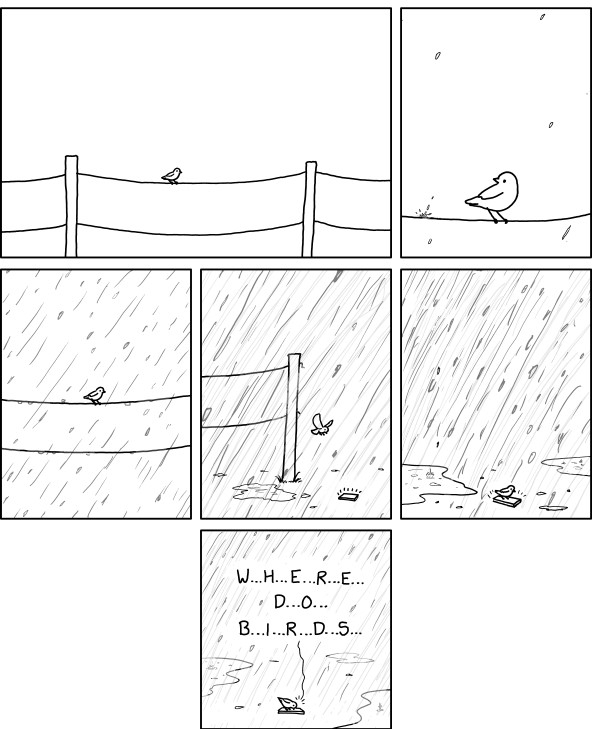The Great Equalizer: What do Birds do in the Rain
Rain: The Great Equalizer
By Krista Botting, Summer Field Biologist
Gray clouds roll in, a breeze starts up, and you can smell ozone on the air. You know it’s coming. The birds know it’s coming. Even your dog knows it’s coming. The rain might start as a sprinkle, or it may come in a torrent of water.
Do you ever notice how quiet it gets before a storm? The birds stop singing and fluttering around. Where do they go? What do they do when the drops start falling?!
The answer to that depends on the species. Some birds don’t care about the rain—like ducks, geese, and other fresh-water birds. They spend a good deal of their time already in the water, diving in and out of lakes and ponds. Their feathers are heavily waterproofed, so water falling from the sky isn’t much cause for worry. In stronger storms, they may seek out shelter if winds become too fierce.
Seabirds take different strategies depending on where they spend most of their time. Most seabirds have strongly waterproofed feathers, but ocean storms are a different beast than storms over land. There’s no place to perch, no shelter, and one toss of the waves can pull you under. The larger birds far out to sea stay put and wait it out. They can handle the rough waves. But smaller seabirds that are closer to land will flee a storm well before it hits. Like most animals, birds are attuned to changes in the weather and can sense the storm in time to find shelter.
Although all birds have some waterproofing ability, land birds have less. Birds create air pockets between their feathers, which helps hold in heat. It’s like having a permanent down jacket. This is why on cold days the birds are fluffier. But it’s worse for small birds. There’s a real danger for them. If those air pockets fill with water instead of air, the bird is in danger of hypothermia. And, the smaller the bird, the more heat it loses, and the wetter the bird, the less heat it can keep in. To avoid this, smaller birds take shelter before it starts raining. Larger birds can usually stay out a little longer, but eventually take cover in a tree or bush.
A passing shower or storm is one thing, but deluges that last for days can become a problem. Food and fat reserves start to run low, especially for smaller birds that need to eat more often. This will drive birds to brave bad weather, especially when it’s been raining for a while. It’s a choice they must make: take shelter in hopes that the rain will be quick, or continue foraging for food in case it isn’t.
Every day is a battle for survival in the life of an animal.
Have questions? Contact us: info@bedfordaudubon.org



